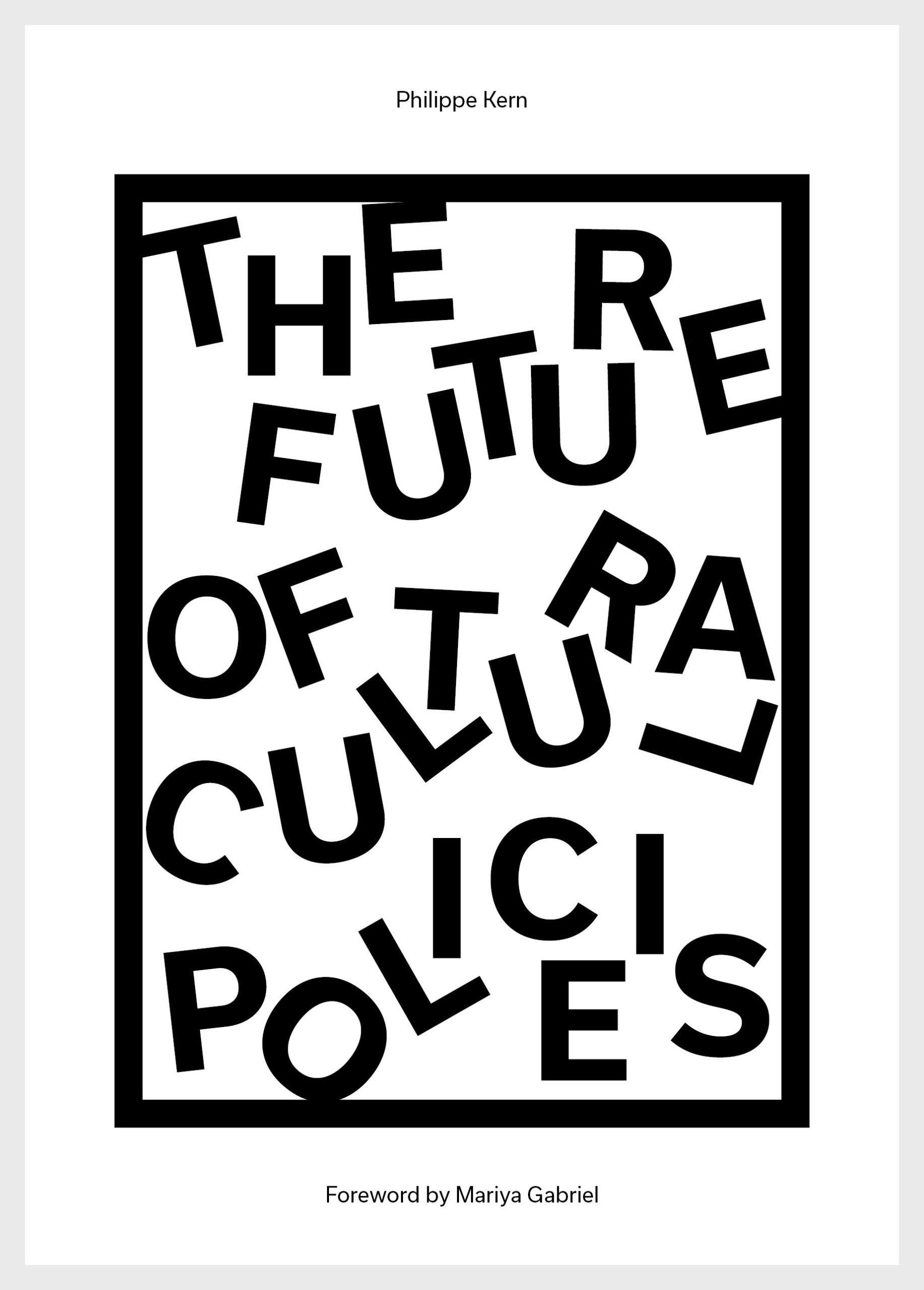Book review: The Future of Cultural Policies
Dorota Ilczuk
Professor and Mateusz Smól, PhD student
at SWPS University, Creative Economy
Research Centre
By Dorota Ilczuk
Philippe Kern is the founder and managing director of KEA European Affairs. His expertise is recognised and well-received worldwide, notably in such disciplines as cultural economics, cultural studies, intercultural communication and cross-border collaboration. In 2004, he was the first one to estimate the full economic scope of culture and its industries in Europe, as well as to propose a framework for classification of cultural sectors, and cultural and creative industries. As a result, he pointed to a new way of looking at culture as an area which co-creates creative economy – one of the reasons why Kern’s recent publication The Future of Cultural Policies arouses our deep interest.
The United Nations’ decision to declare the year 2021 as the International Year of Creative Economy for Sustainable Development deems it particularly necessary to discuss and revise European Union’s cultural agenda. The potential of cultural and creative sectors to generate economic growth and general prosperity has been well-documented in recent years; yet still culture is considered a non-essential amenity by many in charge. There is an urgent need for loud advocacy of well-designed sustainable strategic cultural policies rather than ad hoc project-driven non-consequential actions that are often dominating the European Union’s cultural and creative programmes. This book is such voice of advocacy.
The book presents several articles in a well-defined structure, giving a reader a feeling of continuity in its narrative. The two distinct parts of the book, Part 1: For a European Cultural Policy and Part 2: Financing the Cultural and Creative Sectors, present a holistic approach towards the subject and include an overview of former and present cultural policies of the EU, a critical reflection on them, recommendations for policy makers for future consideration, a short overview of the economic situation of cultural and creative sectors in the EU Member States, opportunities’ identification for private investments and advice for cultural and creative entrepreneurs. The structure first allows a reader to understand the current shape of European cultural policies and subsequently gives them recommendations on possible actions that can be undertaken to encourage more private investments in the CCS’.
Part 1 – For a European Cultural Policy
It is important to emphasize here that the principal of subsidiarity, which has been adopted by the European Union, allows each Member State to shape and realize their own cultural policy. When we use the term ‘European cultural policy’, what is meant by that is the cultural policies of individual countries, as well as interventions and other actions undertaken in these areas by such entities as the Council of Europe or the European Union. Philippe Kern in his book focuses mainly on the European Union’s programmes.
Kern begins with a description of the current state of the European Union’s cultural agenda, starting with a report on the competences of the EU, set out by several treaties from 1980s until today. The author aptly points to the shortcomings of the current EU’s policies and to the general underappreciation of culture as a force to advance social and economic development, foster innovation and achieve prosperity. ‘In political circles the use of the term “culture” signals the end of serious conversation with senior civil servants and most politicians or captains of industry.’ (p. 29). This excellent point illustrates the lack of cultural comprehension among EU’s decision makers, despite a lot of evidence gathered in recent years by economists, sociologists and experts in the field of cultural studies. In that respect, Kern’s position is well-argued and advances the discussion regarding the importance of cultural policies for the survival of the European ideal in the ongoing rise of nationalistic and authoritarian sentiments. Furthermore, he goes on to provide readers with normative statements in form of a priorities’ framework, which should certainly be taken into account by policy makers and other cultural stakeholders.
The last article of the first part of the book – Cultural Policy Design and China – provides with an interesting bridge between the two parts of the book. Drawing on his personal experience as a manager of the KEA office in Shenzhen in China, Philippe Kern points to the differences in the cultural protocol and the ways of doing business between European and Chinese stakeholders. Since the rapid cultural and economic expansion of China, it is justifiable to include this comparative analysis of the two business cultures within the chapters of this book, especially as an etiquette guide for European creative entrepreneurs. However, the book could also benefit from extending this analysis to other culturally influential nations, notably such countries as United States, Japan, Brazil or South Korea. Perhaps there is an opportunity for future publications in this area.
In some instances, the book could also benefit from more detailed descriptions of cultural differences within the EU, taking under consideration a variety of political, economic and social aspects of particular Member States, since those will differ in their internal business cultures and approaches towards cultural policies. Another issue possibly deserving better recognition is the professional situation of creators and artists. It does not correspond with recognized developmental tendencies, according to which, culture and its industries have been acknowledged as new areas of investment and sources of creativity and innovation. Cultural policies of European countries, which belong to public policies, just to small extent recognize the new reality of culture characterized by greater market scope and the presence of new technologies. In this new reality, there is a need for suitable regulations that take into account the social needs of creators and cultural performers. However, such extended approach could result in a lengthy text, exceeding the expectations of this type of publication, therefore, we leave this suggestion for consideration in future research and publications.
Part 2 – Financing the Cultural and Creative Sectors
The second part of the book focuses entirely on financial aspects of cultural and creative sectors. It mainly aims ‘to alert cultural and creative entrepreneurs to the opportunity of a dialogue with the financial community’ (p. 66). It serves as a guide for those entrepreneurs who are searching for funding outside the public sector, focusing on the possible business relations between financial institutions and CCS’. Kern aptly points to a sort of a stalemate in such relations, a lose-lose situation, where the relationship is being difficult to establish because of a wide mistrust between the two parties. On one hand, the banking sector does not fully grasp the potential of CCS’ in generating returns on investments; on the other, entrepreneurs operating within CCI’s are unwilling to search for financial resources within banking sector, deeming it ‘a waste of time’ (p. 67). As also pointed by the author, the European Commission (in cooperation with the European Investment Fund) established a Guarantee Fund for banks and other financial intermediaries to invest in CCS’. Kern advices a reader (these chapters are mainly targeting entrepreneurs) on how to convince those institutions to invest in their creative enterprises, advocating also for a more long-term strategic approach from both parties instead of a project-driven application system. Such approach is vital for the sustainability of CCS’ – a position which is well-argued throughout the book.
Conclusions
Last year, we have been working at the Creative Economy Research Centre on an article for a report prepared by CASE, one of the leading think tanks in the East-Central Europe. Our paper emphasized the importance of the EU funding for the cultural development in Poland (Ilczuk, Karpińska, 2019). At that time we have been celebrating the 15th anniversary of joining the Union, time sufficient to summarise what has been done so far and to articulate future expectations. We have concluded the text Culture: Unity in Diversity by referring to the on-going debate regarding the actions undertaken by the EU in the area of culture.
“Currently, there is some pressure to create a EU’s cultural policy, although decisions in the scope of cultural development belong to the competences of Member States. The debate on allowing stronger tools to exert pressure concerns the fields and activities of culture and the arts that develop feelings of community and European citizenship while at the same time maintain respect for the heritage of countries, regions and cities. It seems insufficient to treat culture mainly as factor of achieving of economic and social priorities. Culture has the ability not only to create customs and standards, but also to strengthen ties within communities, create identity and support civil society. At a time of EU unity out of balance and difficulties which the Community is facing due to Brexit, the development of culture should become an autotelic objective and a priority of the new horizon. This would surely refresh and fortify the wise concept of unity in diversity, which fosters the development of and care for countries’ own cultural area while drawing from strength and resources of the Community.”
With this quotation, we would like to emphasize, that Kern’s voice here is far from being isolated; on a contrary, such position is gaining on strength throughout Europe.
The book The Future of Cultural Policies by Philippe Kern is not only very informative, but enjoyable to read. Because of the scope of the text, the book has potential to attract a wide range of readers concerned with cultural and creative sectors. It can be recommended to academics and students, civil servants, policy experts and makers, and public cultural institutions’ managers, as well as to privately managed cultural organizations and entrepreneurs.
Culture has the power to shape and reshape realities around entire social groups – it can move masses and touch individuals. It is in the EU’s greatest interest to realize and capitalize on this potential, advancing ideals set out by its agenda, before somebody else will.

Key link:
The book The future of cultural policies by Philippe Kern
